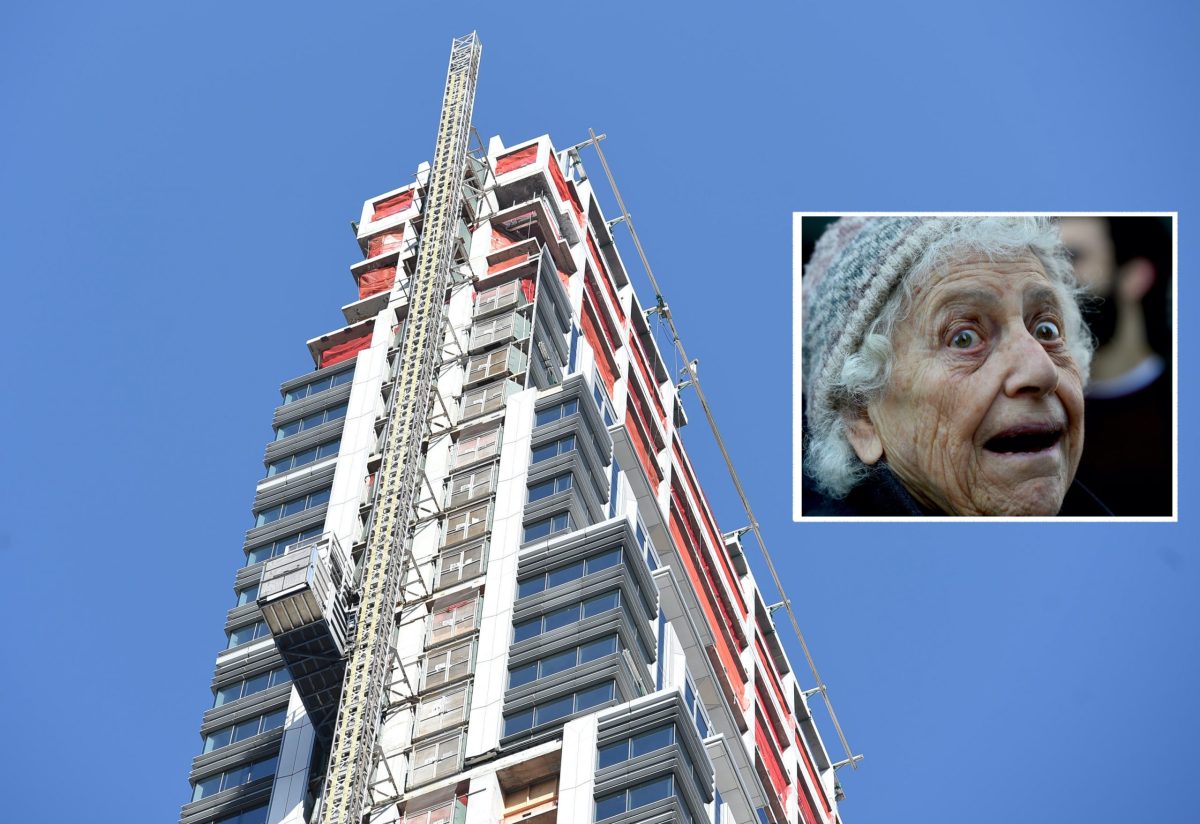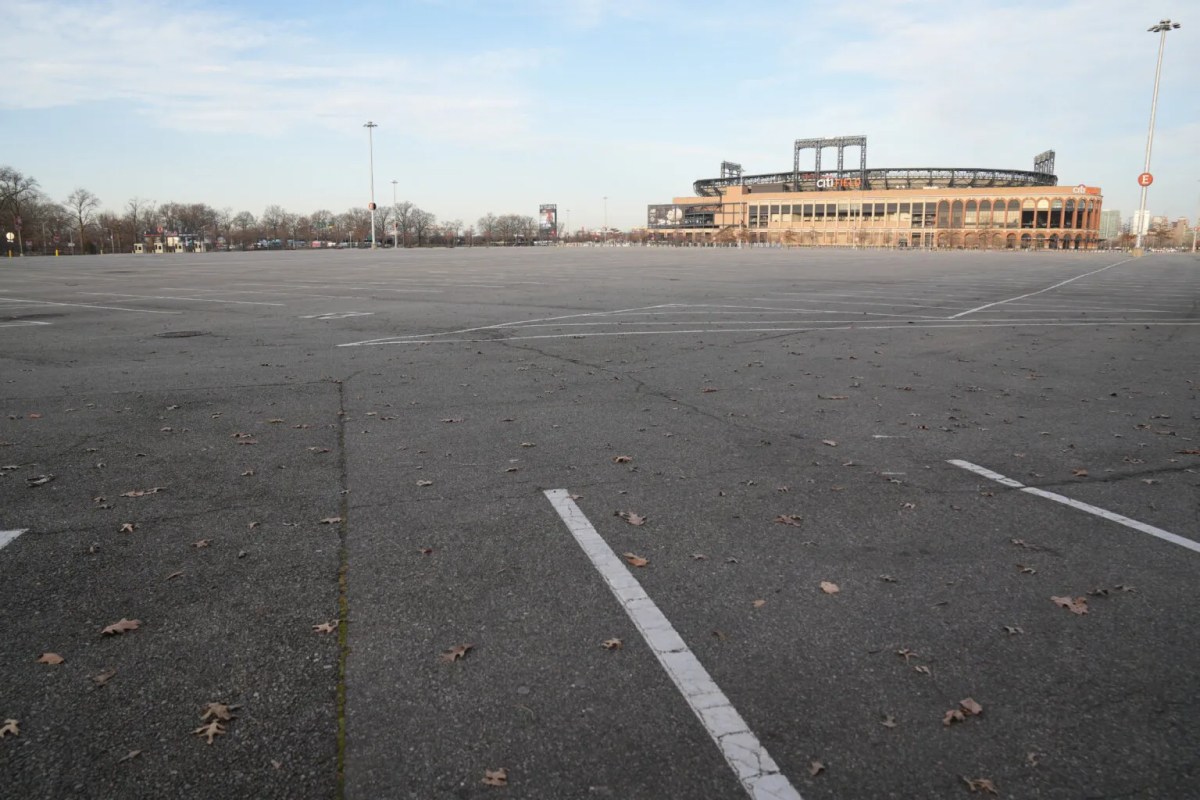Manhattan community leaders hailed a judge’s decision that could lead to developers of a nearly completed Upper West Side high rise to tear up to 20 stories off its current 66 stories.
Leaders gathered across the street from the site at 200 Amsterdam Avenue on Monday morning where they took an early victory lap shouting a take famous French euphemism, “off with their floors.”
While many local leaders and elected officials advocated to lower the height of the building — much larger than anything in the community — many credited Olive Freud, a 40-year resident of the neighborhood. Freud is the president of the non-profit Committee for Environmentally Sound Development, and now a proven thorn in the side of the developers.
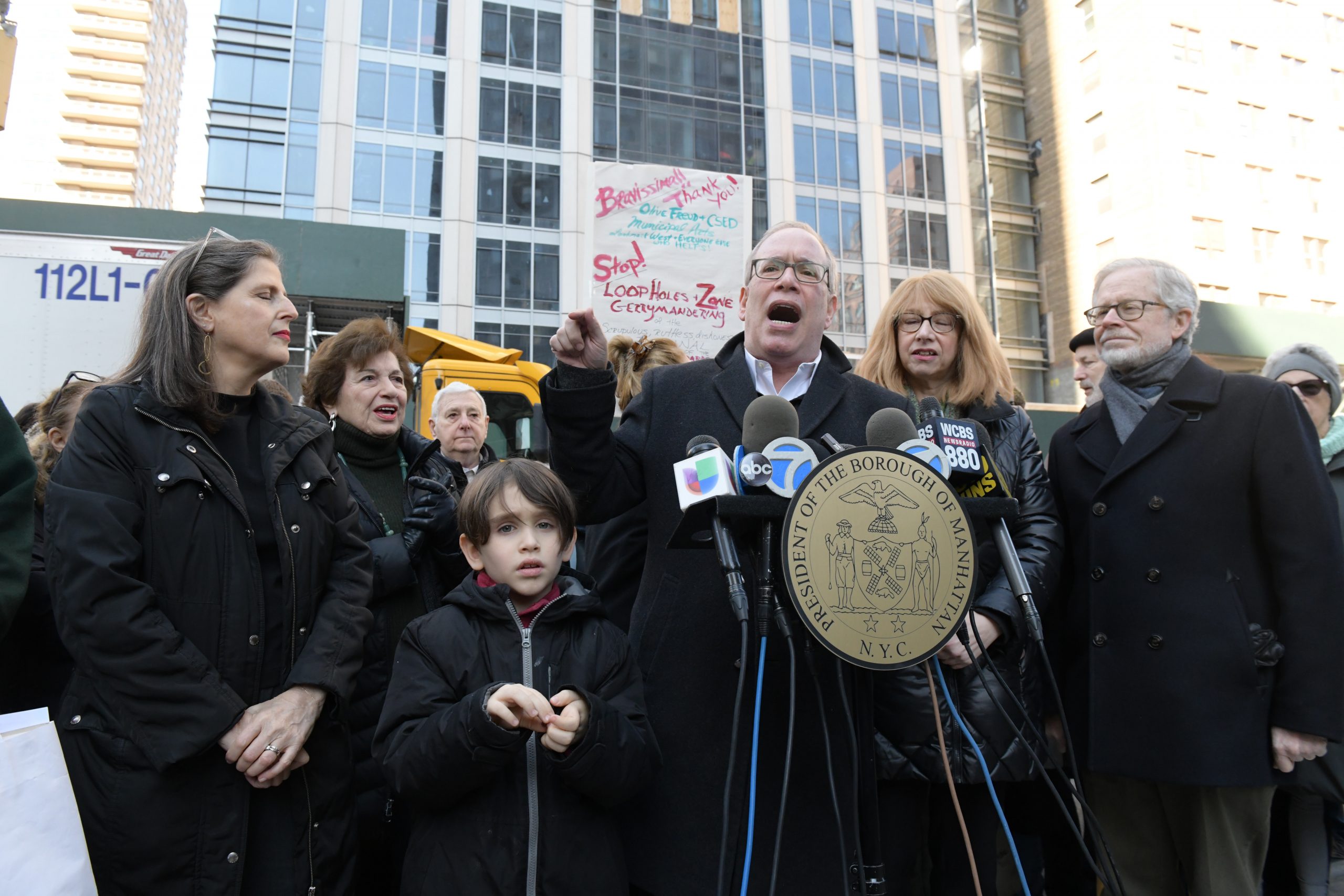
It seemed that the developers SJP Properties and Mitsui Fudosan America were home free until Freud and attorneys representing her group hired George Janes, an urban planner, to study the complicated zoning lot that the developers had pieced together. Initially, the developers were allowed it to build 668 feet high — twice the height of the buildings immediately surrounding it.
Janes, however, found errors in the zoning lot that would force the Department of Buildings to re-examine the permits.
Then, on Feb. 14, Manhattan Supreme Court Judge W. Franc Perry issued a staggering decision that the city must revoke the building permit for the site and the developers must remove a floors because the structure exceeds zoning limits.
Leaders say this might be the turning point of a war against over-development in other communities, officials say. One of the most glaring fights might be in Brooklyn, where a developer is seeking to build a high-rise next to the Brooklyn Botanical Gardens that will cast a shadow and stunt plant growth at the venerable institution.
“This ruling will set a precedent and that’s why it is so important for us to be here today,” said Comptroller Scott Stringer. “This is a great victory for the West Side but it will also matter in Brooklyn and throughout our city.”
Stringer joined numerous elected officials outside the development to hail the court decision, even if it isn’t the final say in court pending appeal. Stringer maintains that continued construction of upper income high rises “makes the entrance fee to the city is a $2-3 million condo; the fee is having a large development project that violates the tenet of the law, violates the zoning code – then this city must realign itself with the reality of our community and community based planning.”
He and other elected officials including Congressman Jerry Nadler, Assemblymembers Dick Gottfried and Linda Rosenthal, Borough President Gale Brewer and numerous council members hailed Freud as a hero and tenacious fighter.
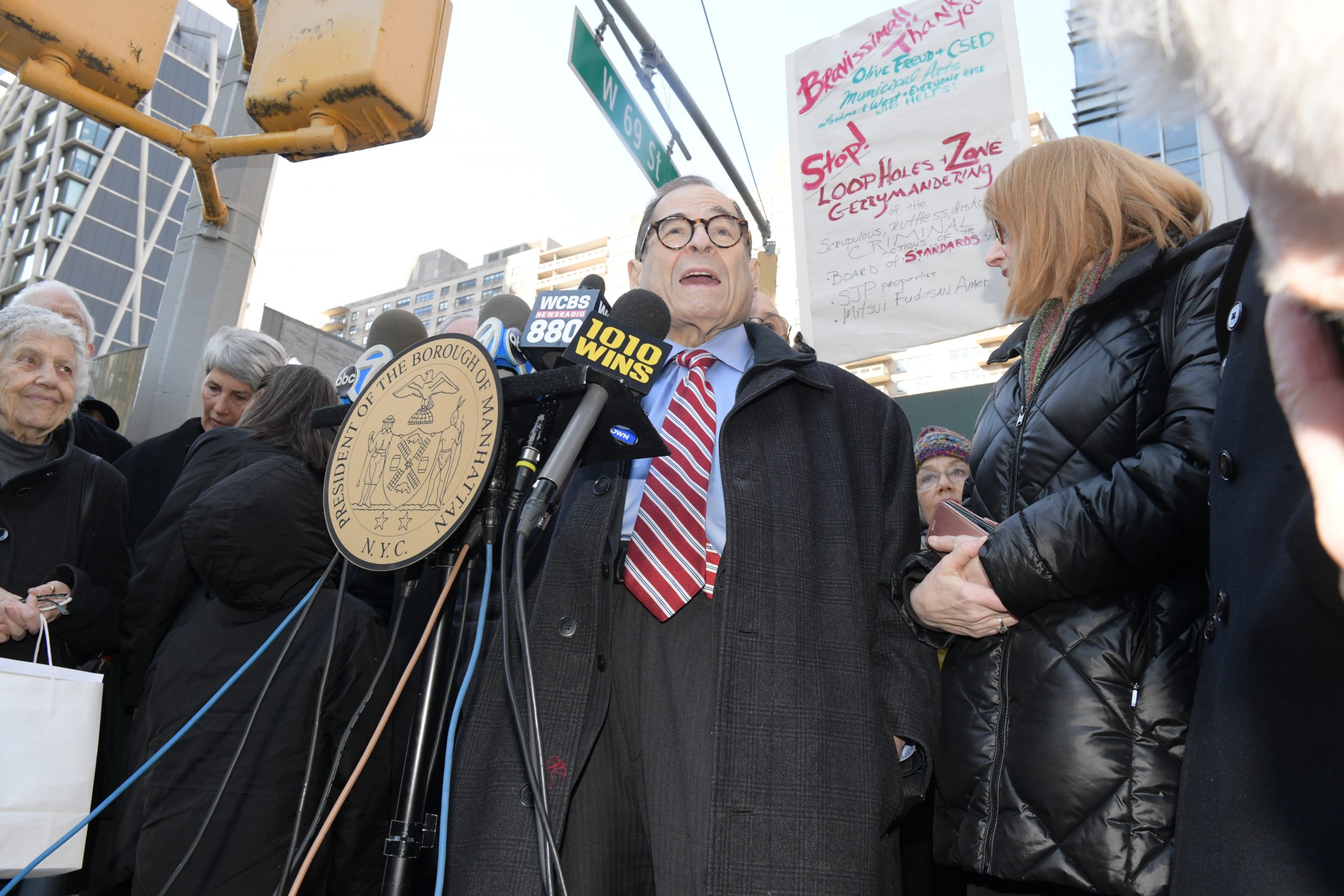
“I feel embarrassed because they came here and they heard what I had to say and others were involved too,” Freud said. “The developers used little pieces of land to justify what they were doing and the judge said they were wrong. We were not giving up.”
Nadler applauded local efforts and said leaders have been “fighting over development for I don’t know how long.”
“I remember fighting the Trump developments starting 30 years ago, and we were fighting it before that,” Nadler said. “We beat the Trump development to a large extent, but its not nearly enough. This city must for all kinds of people, middle income, low income, rich, whatever. It cannot be just a ghetto for only rich people. The victories have been few and far between, but this is one of them.”
Councilwoman Helen Rosenthal hailed Freud for not giving up and finding a way to stop the high rise.
“To all of the advocates in the community: don’t stop,” said Rosenthal, continuing, “Because at the end of the day, you are right. What you are thinking about in your gut that a 66-story building does not seem like the right thing to be surrounded by 23 story buildings – your gut that said that’s not right – keep going with it. So I can’t wait to be here to see the 20-stories come down.”
Mark Diller, chairman of Community Board 7, has maintained a position against the over development.
“I’m grateful for the advocacy behind us, and grateful for Judge Perry who brought us back to common sense,” Diller said. “No one would think that a building of those dimensions belongs in our neighborhood let alone a building that adds nothing to affordable housing, that does nothing for the homeless, and nothing for the community. This is inappropriate and thank heavens that the court has returned us to the same reality and thanks to people like Olive who would not give up.”
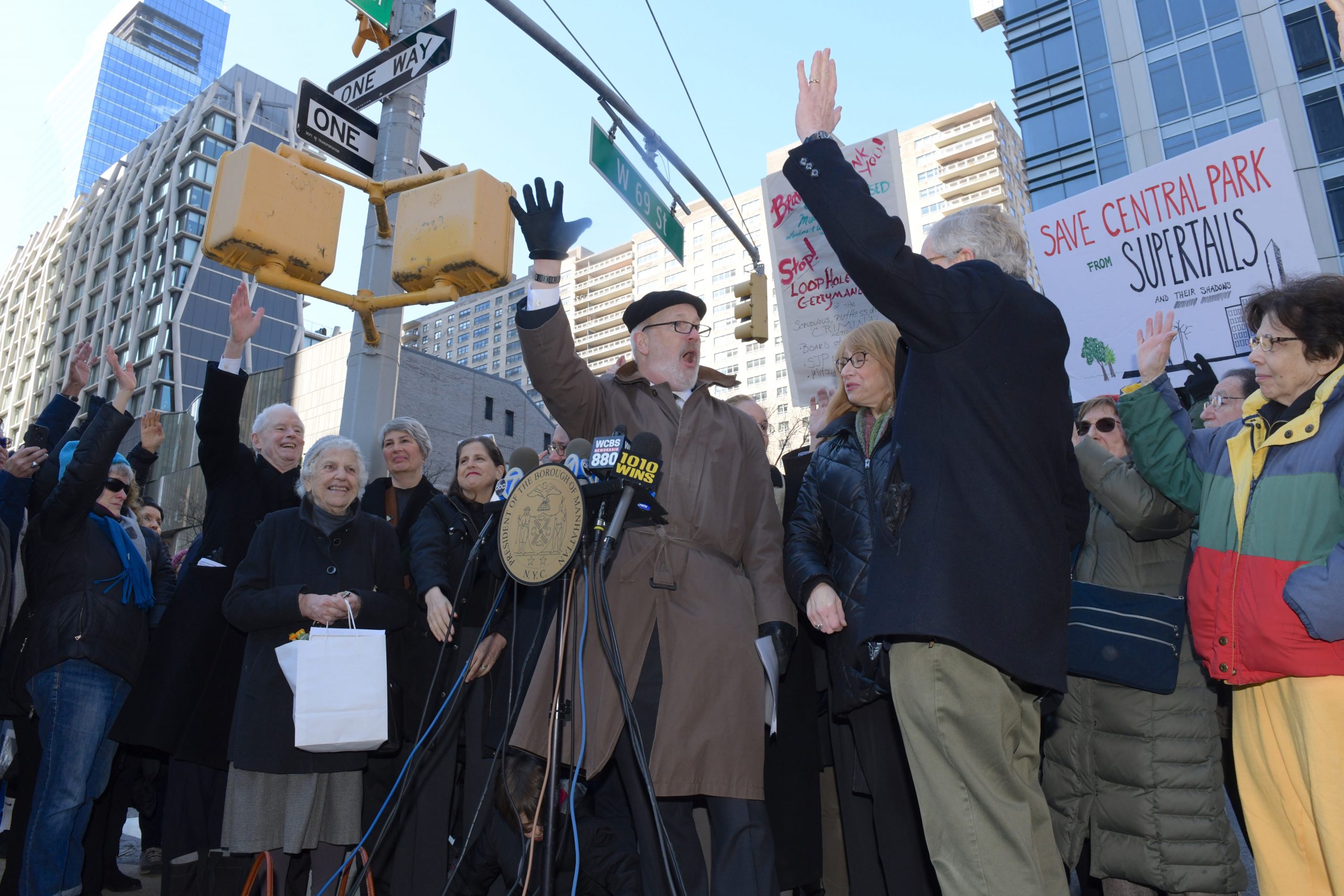
Assemblymember Rosenthal said the architects and developers “knew what was going on because they schemed to defy the zoning law.” She said some Assembly members are working on legislation to limit how tall a building might rise.
She said she introduced with Senator Robert Jackson a bill to cut back on the “irresponsible ploy to allow huge mechanical voids to make the building taller – the bill will set parameters about how big you can use – a loophole.”
“The DOB should never have granted a permit, the board of standards and appeals should never have allowed this building to go forward,” Rosenthal said.
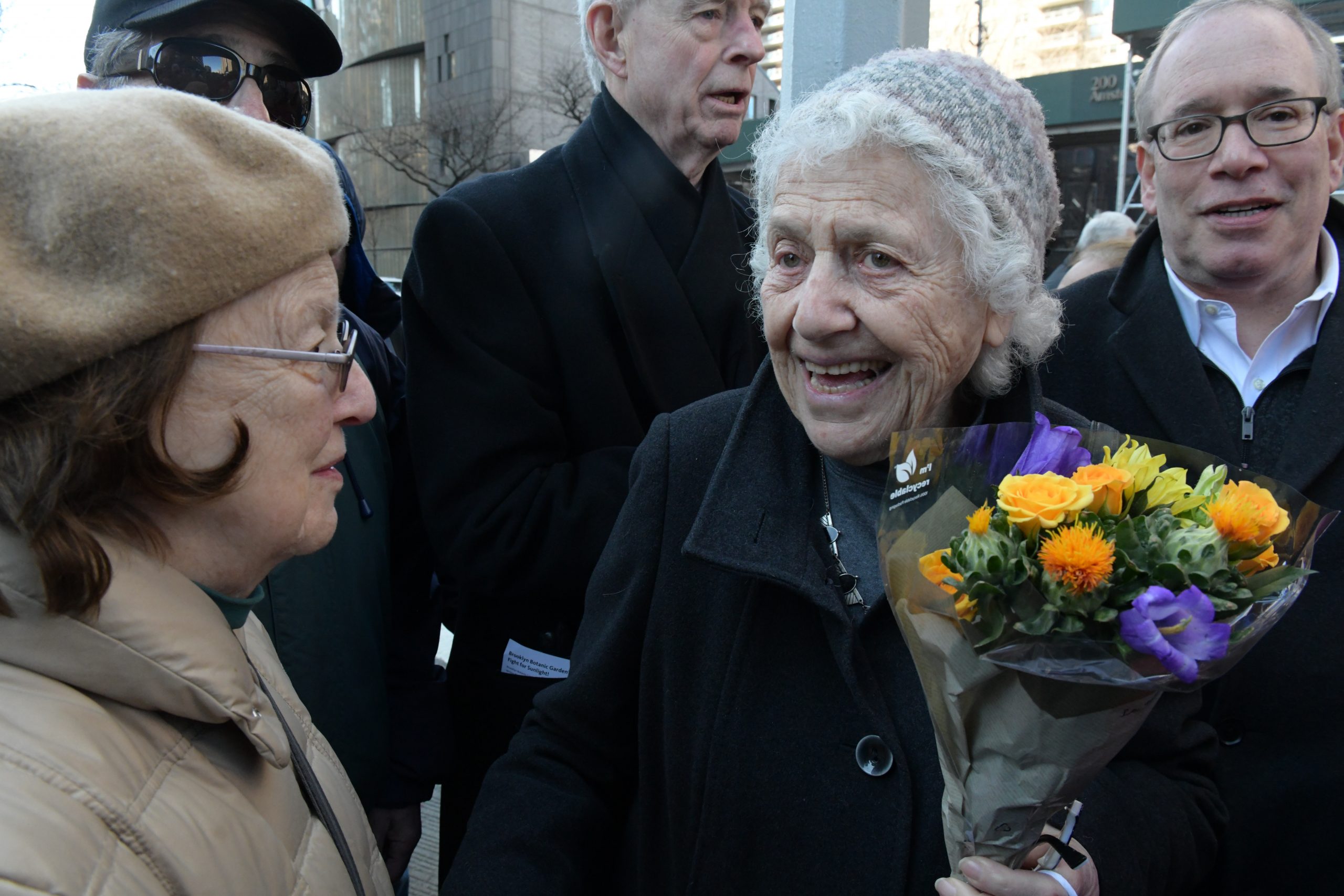
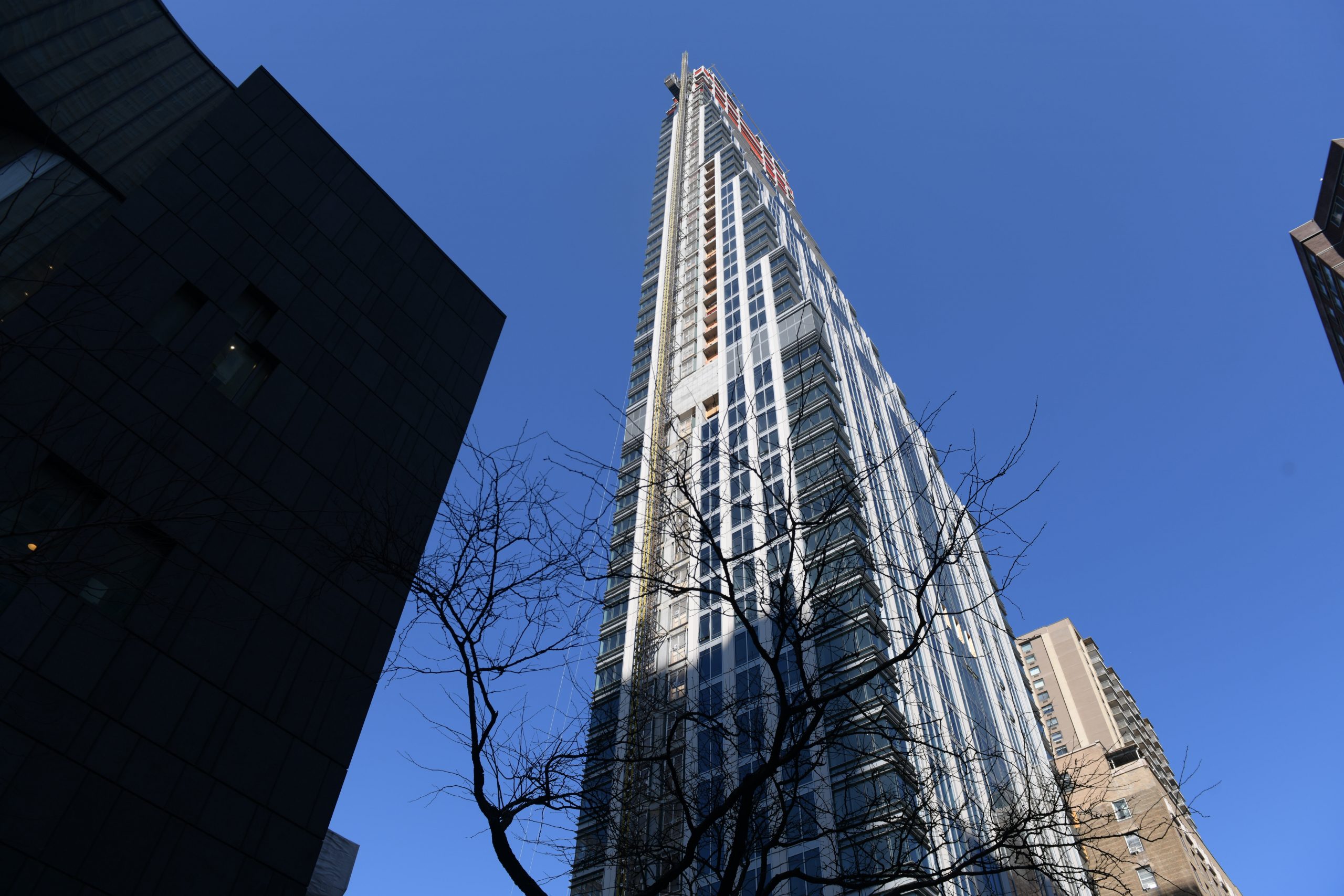
It is common for developers to purchase the unused development rights of adjacent buildings to add height and bulk to their project, many developers buying air rights from religious institutions who use that money to maintain their properties. But this time opponents of the development argued that the developers, SJP Properties and Mitsui Fudosan America, created a “gerrymandered,” highly unusual 39-sided zoning lot to take advantage of the development rights from a number of oddly connected lots. The development might have been little more than 20 stories, than the current 52-stories without using this technique.
The developers have said in published reports, that they plan to “vigorously” appeal the decision and maintain they “completely followed the law.” But if the ruling stands, the building could be reduced by nearly half its size, costly the developer millions. However, the number of floors to be chopped has not been determined and might take months to resolve, thereby stopping further construction.



